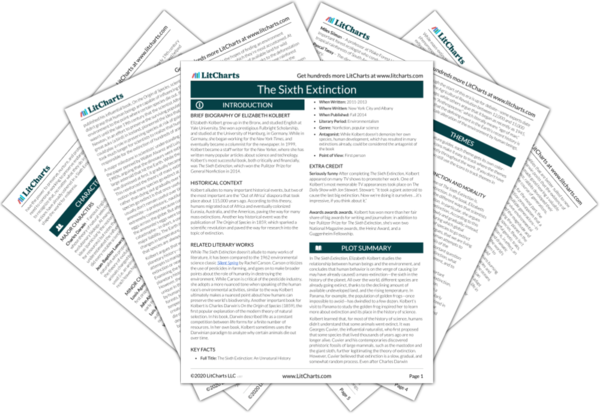LitCharts assigns a color and icon to each theme in The Sixth Extinction, which you can use to track the themes throughout the work.
Mass-extinction and Morality
Natural Selection and Mass-extinction
Environmental Change and Human Nature
Science and Paradigm Shifts
